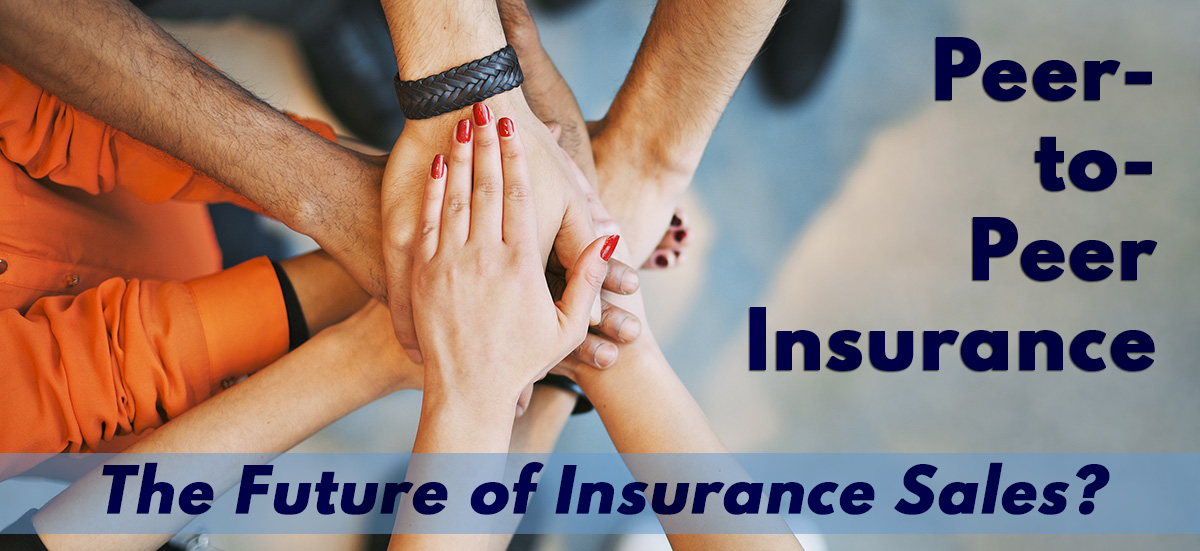
Here at Pinney, we often talk about the future of insurance – from Customer 2.0 to Sales 2.0, we want to anticipate how changes in technology change the way our clients shop. But what if technology changes more than how our clients shop?
What if it changes the very notion of what it is to be insured? It could happen. In fact, in other parts of the world, it’s already happening...and someone with the last name of Zuckerberg is paying attention.
It Started with Crowdfunding
As of the end of 2014, crowdfunding as an industry is estimated to have added 270,000 jobs and $65 billion to the global economy.
Have you ever paid to support a unique product on Kickstarter? Or plunked down a few dollars to support an artist or writer on Patreon? That’s crowdfunding – people raise money to support projects big or small by asking for donations online. Sometimes the projects are small – a single eBook, for example, that an author’s fans can pay to help produce. Other times, they’re retail products that fit a niche in the market and supporters pledge cash to help make that product a reality. The idea here is that people choose what products they want to support and purchase – not the shelves of your nearby superstore.
It Became an Insurance Model
Look at Friendsurance...That's the perfect example of a social insurance company.
In 2010, a German company called Friendsurance applied the crowdfunding platform to insurance using a model called “peer-to-peer insurance.”
They wanted to reduce the number of fraudulent claims and change the way consumers view insurance. As they say on their website, “…people pay high premiums each year and get nothing in return.” Ouch.
So they set up a different way of doing business, operating as an independent broker who partnered with 60 German insurers. Here’s how it works.
- Groups of friends connect online and form their own circle of insured users.
- They each pay an insurance premium. Part of that premium goes into a general fund and part goes to a regulated insurer (or re-insurer) providing the group’s insurance policy.
- Small claims are reimbursed out of the general fund.
- Big claims would still go through the insurer, as with traditional insurance.
- Groups with no claims get a cash-back bonus at the end of the year – up to 40% of premiums paid, says Friendsurance.
The selling point is that the more people you have in your group, the less you pay. The fewer claims your group members have, the more of that money you get back. In theory, this means that having responsible people in your group keeps costs low – and reduces the likelihood of fraud. Customers like the idea of saving on premium, and insurers like the idea of less fewer claims, less fraud, and less frequent churn in the market.
So is it working?
Well, according to their website, in 2013 and 2014, more than 80% of their customers got at least some of their money back. TechCrunch reports that in January of 2014, a whopping 94% of Friendsurance customers got cash back. That’s a pretty good follow-up to their Startup of the Year award, earned in 2011 from a German magazine.
Randi Zuckerberg, sister of Facebook’s founder, told LifeHealthPro.com that Friendsurance is “the perfect example of a social insurance company.” If that’s not a sign for us to pay attention, we don’t know what is.
It Became a Global Trend
In 2014, French P2P insurance startup insPeer was a finalist in the Grand Prix de l'Innovation de la Ville de Paris.
Although the trend started in Germany, it caught on quickly. Similar companies have since sprung up in Britain, France, New Zealand, and China.
Guevara, a British peer-to-peer car insurance company, won Wired Money’s startup pitch competition in 2014. In just two days, immediately after their launch, they sold more than 100,000 pounds in premium. It’s no accident that their website URL, heyguevara.com, plays on revolutionary Che Guevara’s name.
According to the company founder’s comments on ycombinator.com, the company earns a profit via a flat fee – not through premiums, unlike traditional insurers. This means Guevara has less incentive to raise rates to increase profits. Instead, they make money by bringing new people into their ecosystem. Customers may see their rates jump or fall depending on the number of claims within their group, but in this particular case, Guevara caps price volatility at 100% of your group’s first-year premium, but your premium could also drop to 30% of market rate. In other words, you know what your premium ceiling is going to be, but you have the potential to save more.
Is anyone else reminded of IUL here?
You’re guaranteed a flat rate of interest no matter what the market index does, but you also have the chance to earn more if that index performs well.
But Is It a Good Idea?
Of course, there are some problems with peer-to-peer insurance. It’s going to work better for small-claim policies like car insurance than it will for large-claim verticals like health insurance. You’re far more likely to go bankrupt because of healthcare costs than you are because you totaled your car.
To get an idea of the pitfalls of the peer-to-peer model, imagine what happens if you fill your group with young, healthy, non-smokers…and then one of them gets catastrophically ill. Will that person be kicked out of the group to keep costs low for others? If so, what purpose do these groups really serve if they don’t offer long-term insurance protection? Is it really a good idea to trust your friends to pay for your cancer treatment?
There’s also the issue of negotiated costs for services. Continuing with the health insurance example, traditional insurers have negotiated rates for particular treatments and services with hospital networks. A peer-to-peer group probably doesn’t have that bargaining power – and may be charged prohibitively high costs for service.
It’s a work in progress, as you can see.
And Haven’t We Tried This Before?
If the peer-to-peer model sounds familiar, you know your history. In ancient Greece, soldiers contributed part of their pay to a general fund, out of which widows were paid when their husbands were killed. In 1922, a group of 25 army officers insured each other’s vehicles – and that group eventually became USAA. Just six years later, in 1928, they had 8,000 active members. Really, all of today's large mutual insurance companies operate on this same model - but on a much larger scale, capable of handling bigger claims for more varied policy types.
Credit unions operate on a similar basis, albeit with lending rather than insurance. The idea is that you work with people you know and trust. The main difference between credit unions and mutual insurance plans and peer-to-peer is the sense of personal responsibility.
Will It Become Our Future?
We are also cooperating with other brokers. They profit from the high customer satisfaction and the thereby increased loyalty of the clients.
So how could peer-to-peer technology reshape life insurance? Would it even work at all? So far, life insurance isn’t one of the policy types offered by Friendsurance—that’s limited to coverage for your car, home, basic liability, and legal expenses.
This is pure speculation, but here are a few thoughts:
- Risk is spread out over a very long time – the insured’s lifespan. Costs could theoretically be low for peer-to-peer groups containing young and healthy members, but probably not as low as a standard policy with a popular carrier, since the carrier’s risk is spread out over a much larger pool.
- Would no-exam policies be the only types offered? If not, how would small insurance groups handle medical exams? Seems like they’d still need to connect with a doctor’s office (or brokerage) who could help them through the process – and paying for the doctor/lab time might make the cost of medical underwriting less than affordable.
- Could there be a future for BGAs who offer back-office support supporting peer-to-peer insurance groups? The peer-to-peer group could pay the brokerage a fee out of the premiums collected each calendar year.
What’s your take on peer-to-peer insurance? Can you see this model working for life insurance?

